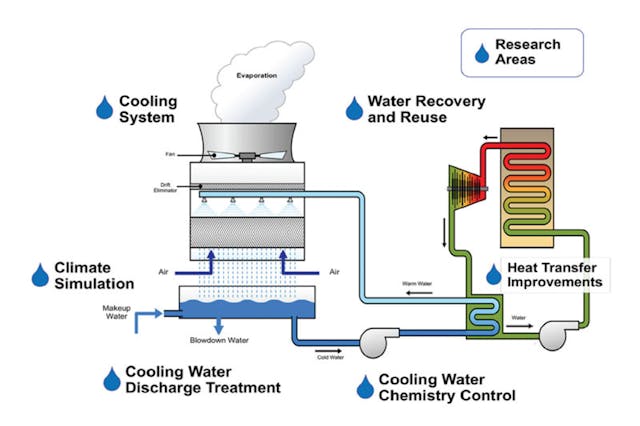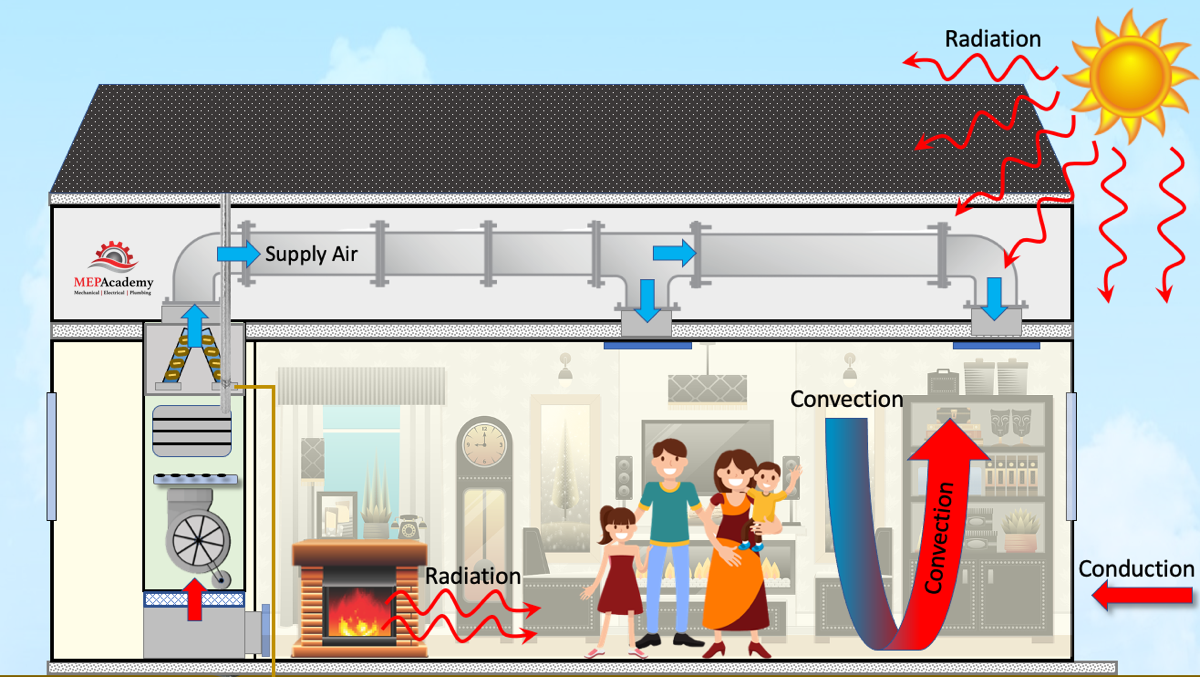Five Techniques DVS Heat Transfer Systems Improve Energy Management in Manufacturing
Wiki Article
The Duty of Heat Transfer Solutions in Sustainable Energy Solutions for the Future
Heat transfer systems are crucial in the pursuit for sustainable power options. They enhance thermal energy monitoring, improving the effectiveness of sustainable innovations. By employing devices like radiation, conduction, and convection, these systems lessen power losses. Their function in solar thermal and geothermal applications is specifically considerable. As technologies emerge, the possibility for additional developments raises essential concerns about future energy strategies. What developments will form the landscape of sustainable power?Comprehending Heat Transfer Solutions

The Value of Thermal Power Monitoring
Effective thermal power monitoring is important for making best use of energy performance and decreasing waste in numerous systems. By managing temperature level and maximizing Heat transfer procedures, companies can substantially minimize power usage and functional costs. Effective administration entails the application of innovative modern technologies and practices that keep an eye on and regulate thermal conditions within systems, making certain that energy resources are used efficiently. In addition, appropriate thermal energy monitoring adds to decreasing greenhouse gas discharges, lining up with international sustainability goals. It also boosts system integrity and performance, resulting in enhanced product top quality and longer tools life-span. Inevitably, focusing on thermal energy administration is a crucial step towards creating a lot more lasting energy options and promoting a liable strategy to power intake in industrial and residential contexts.Applications of Heat Transfer in Renewable Resource
While different eco-friendly power sources guarantee sustainability, the efficient application of Heat transfer plays a crucial duty in their performance. In wind energy systems, Heat transfer is used for wind turbine part cooling, boosting efficiency and durability. Geothermal power counts on efficient Heat exchange between the earth's subsurface and the fluid flowing in the system, optimizing power removal. Biomass energy procedures likewise benefit from Heat transfer, as it helps in transforming organic products into usable gas via pyrolysis and gasification. Furthermore, in hydropower, preserving ideal temperatures in tanks can enhance energy outcome. Each of these applications shows the crucial significance of Heat transfer systems in improving sustainable energy innovations, ultimately adding to a more sustainable energy future.Enhancing Solar Thermal Power Effectiveness
As solar thermal power systems continue to progress, improving their efficiency has actually ended up being important for making the most of power outcome. Advancements in Heat transfer innovations, such as improved thermal storage products and ingenious Heat exchangers, play a significant duty in enhancing performance. By making use of advanced products that have exceptional thermal conductivity, systems can move and record Heat much more properly. Additionally, integrating radar that adhere to the sunlight's path assurances that collection agencies get perfect solar exposure throughout the day. Making use of nanotechnology in solar absorbers can even more raise energy absorption rates. Integrating automatic control systems aids manage temperature levels and take care of energy distribution effectively, leading to decreased losses and enhanced general system performance. These enhancements lead the way for more sustainable solar thermal power services in the future.Geothermal Heating: A Lasting Remedy
Geothermal home heating provides a practical option for sustainable power, offering considerable ecological advantages through lowered greenhouse gas exhausts. Its efficiency and cost-effectiveness make it an appealing option to conventional heater. However, difficulties associated with application should be addressed to optimize its prospective impact.Ecological Advantages of Geothermal
Although standard heating approaches contribute substantially to greenhouse gas emissions, geothermal home heating offers an engaging choice that reduces environmental effect. By harnessing the Earth's inner Heat, geothermal systems utilize a sustainable power source, substantially decreasing dependence on nonrenewable fuel sources. This method produces minimal carbon emissions, making it a cleaner option for residential and industrial home heating. Additionally, geothermal systems promote power performance, as they need less energy contrasted to standard furnace. DVS Heat Transfer Systems. The utilization of geothermal energy likewise assists in minimizing air contamination, boosting neighborhood air quality and public health and wellness. As a lasting option, geothermal home heating sustains environment adjustment mitigation initiatives, positioning itself as a crucial part in the change in the direction of a greener futurePerformance and Cost-Effectiveness
Exactly how does geothermal home heating determine up in terms of efficiency and cost-effectiveness compared to standard heater? Geothermal heating demonstrates superior efficiency, frequently achieving a coefficient of efficiency (POLICE) of 3 to 5, implying it creates 3 to five units of Heat for each device of electrical energy consumed. This efficiency equates into reduced operating expense, specifically in regions with steady geothermal resources. First installment prices can be greater than traditional systems; nevertheless, long-term financial savings on energy costs and minimized maintenance expenditures can balance out these upfront financial investments. Additionally, many federal governments incentivize geothermal systems with rebates and tax credit scores, enhancing their cost-effectiveness. Overall, geothermal home heating arises as a economically feasible and sustainable choice to even more standard home heating remedies.Application Challenges and Solutions
Countless challenges can hamper the widespread execution of geothermal heating unit, regardless of their clear advantages as a lasting power service. High preliminary installment prices frequently hinder property owners and capitalists, making financing a considerable barrier. Furthermore, the geographical constraints of suitable geothermal websites restrict accessibility in particular regions. Regional laws and permitting processes can also complicate task growth, causing delays. In addition, public understanding and understanding of geothermal systems continue to be reduced, impeding acceptance. To attend to these difficulties, targeted education projects can improve public understanding, while government motivations could relieve financial burdens. Teaming up with local authorities to improve policies may help with smoother job approvals, ultimately promoting the adoption of geothermal other heating as a practical, sustainable power alternative.Technologies in Heat Transfer Technologies
Innovations in Heat transfer innovations play a vital duty in boosting energy effectiveness and sustainability. Advanced Heat exchangers and phase change products go to the center of these growths, supplying considerable enhancements in thermal administration. These technologies not only maximize power usage yet additionally add to decreasing environmental influence in different applications.Advanced Heat Exchangers
Advanced Heat exchangers play a crucial function in enhancing power performance across various applications in lasting power options. These gadgets assist in the transfer of Heat in between two or even more liquids, substantially minimizing energy intake in processes such as commercial heating, air conditioning, and power generation. Advancements in materials and style, such as using nanofluids and portable setups, have brought about improved thermal performance and reduced size demands. Additionally, innovations in digital tracking and control systems enable optimized procedure, further boosting efficiency. By lessening waste Heat and making best use of energy recuperation, advanced Heat exchangers add to decrease carbon footprints and sustain the shift towards environmentally friendly innovations. Their proceeded growth is vital for accomplishing international power sustainability goals.
Phase Modification Products
The combination of stage modification products (PCMs) right into Heat transfer innovations stands for a substantial improvement in power management and effectiveness. PCMs soak up and launch thermal energy during their phase modifications, making it possible for efficient temperature level guideline in structure products and power systems. By storing excess Heat during optimal durations and releasing it when need rises, PCMs add to pack shifting and energy conservation - DVS Heat Transfer Systems. This capacity improves the performance of renewable resource systems, specifically in solar thermal applications. Furthermore, PCMs can improve the thermal convenience of indoor environments, decreasing reliance on standard home heating and cooling approaches. As technologies in PCM formulations remain to emerge, their role in lasting energy remedies is poised to expand, using encouraging opportunities for future research study and application
Future Potential Customers for Heat Transfer in Lasting Energy
As the demand for lasting power remedies continues to increase, the function of Heat transfer systems is coming to be increasingly essential fit future innovations. Advancements in layouts and products are anticipated to improve efficiency in Heat transfer, lowering energy losses in different applications. The assimilation of innovative thermal storage systems, such as phase change materials and thermochemical storage, will allow better management of energy resources. Research into nanofluids and biomimetic Heat exchangers may even more optimize thermal efficiency. Additionally, the adoption of smart technologies will permit real-time monitoring and adaptive control of click to read Heat transfer procedures. These innovations are positioned to considerably add to the general effectiveness and sustainability of energy systems, leading the way for a much more energy-efficient future.Frequently Asked Questions
Just How Can Individuals Apply Heat Transfer Solution in the house?

Individuals can implement Heat transfer systems in your home by installing energy-efficient home appliances, utilizing radiant heat, and maximizing insulation. These steps boost energy effectiveness, decrease prices, and promote lasting methods in property atmospheres.

What Are the Expenses Related To Mounting Heat Transfer Solutions?
The expenses connected i was reading this with setting up Heat transfer systems vary widely, typically including devices, installment labor, and upkeep. Factors such as system kind, home dimension, and neighborhood guidelines substantially affect the overall expense entailed.Are There Government Incentives for Heat Transfer System Installations?
Federal government rewards for Heat transfer system setups differ by region and can include tax obligation discounts, grants, and credits. These financial benefits aim to encourage adoption, inevitably advertising energy efficiency and reducing ecological impact within neighborhoods.Just How Do Heat Transfer Equipments Impact Power Costs?
Heat transfer systems notably affect energy costs by enhancing power efficiency. By enhancing the transfer of Heat, these systems reduce energy intake, causing reduced utility expenses and developing an extra sustainable technique to power monitoring.What Maintenance Is Needed for Heat Transfer Solutions?
Upkeep for Heat transfer systems includes routine inspections, cleansing of components, inspecting liquid degrees, guaranteeing correct insulation, and changing worn components. These jobs help preserve performance, avoid break downs, and extend the system's operational lifespan.These systems facilitate the movement of thermal energy from one tool to one more, enabling the transfer of Heat for heating, power, or cooling generation functions. Geothermal energy counts on effective Heat exchange in between the earth's subsurface and the liquid distributing in the system, maximizing power extraction. Furthermore, geothermal systems promote power efficiency, as they require less energy compared to conventional home heating systems. Advanced Heat exchangers play an essential function in enhancing energy effectiveness across various applications in sustainable energy services. Heat transfer systems significantly influence energy bills by optimizing energy efficiency.
Report this wiki page